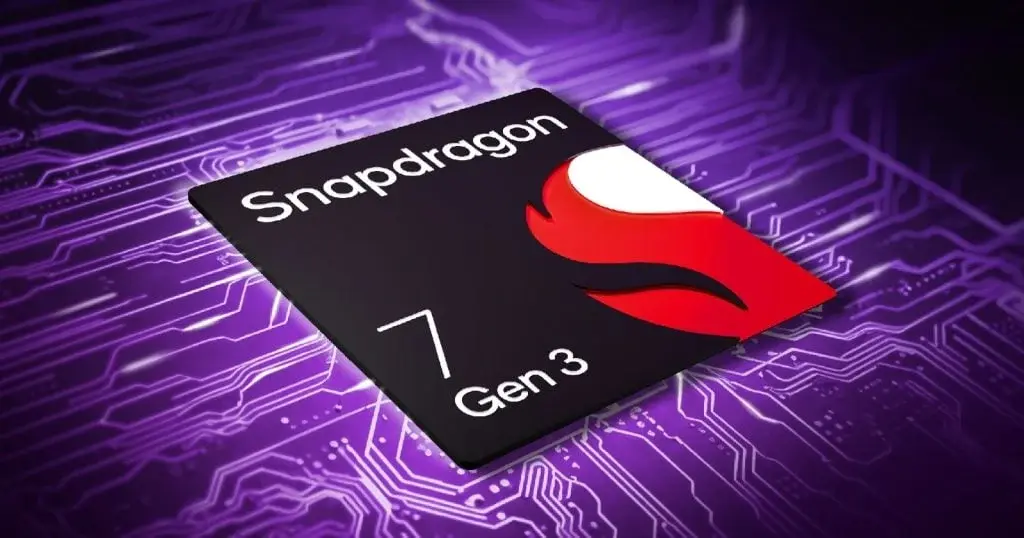Qualcomm offers a range of impressive products, although navigating their naming conventions can sometimes be perplexing. To provide clarity, we will delve into a comparison of two renowned Qualcomm processors: the Snapdragon 7 Gen 3 and the Snapdragon 7 Plus Gen 2, shedding light on their disparities and specifications.
Snapdragon 7 Gen 3 vs Snapdragon 7 Plus Gen 2: Distinctions and Specifications
In scrutinizing the Snapdragon 7 Gen 3 and the Snapdragon 7+ Gen 2, it becomes apparent that both leverage an advanced 4nm fabrication process, likely resulting in enhanced power efficiency. Nonetheless, the 7 Plus Gen 2 claims an edge in CPU performance. Boasting a maximum clock speed of 2.91 GHz, it surpasses the 2.63 GHz maximum clock speed of the 7 Gen 3.
Specifications:
| Specification | Snapdragon 7 Gen 3 | Snapdragon 7 Plus Gen 2 |
|---|---|---|
| Fabrication Process | 4 nm | 4 nm |
| CPU Cores | 1x 2.63 GHz ARM Cortex-A715 | 1x 2.91 GHz ARM Cortex-X2 |
| 3x 2.4 GHz ARM Cortex-A715 | 3x 2.5 GHz ARM Cortex-A710 | |
| 4x 1.8 GHz ARM Cortex-A510 | 4x 1.8 GHz ARM Cortex-A510 | |
| Max CPU Clock Speed | 2.63 GHz | 2.91 GHz |
| GPU | Adreno 720 | Adreno 725 |
| NPU | Hexagon | Hexagon |
| Memory type | LPDDR5 | LPDDR5 |
| 5G Modem | Snapdragon X63 | Snapdragon X62 |
| Peak 5G Download Speed | 5 Gbps | 4.4 Gbps |
| Wi-Fi / Bluetooth | Wi-Fi 6E / Bluetooth 5.3 | Wi-Fi 6E / Bluetooth 5.3 |
Both chipsets incorporate robust Adreno 700 series GPUs, yet the Snapdragon 7+ Gen 2 distinguishes itself with the marginally superior Adreno 725, making it a preferred option for mobile gaming aficionados.
Moreover, the Neural Processing Unit (NPU) plays a pivotal role in executing artificial intelligence tasks. In this realm, the Snapdragon 7 Gen 3 and Snapdragon 7 Plus Gen 2 exhibit comparable performances, employing the Hexagon NPU.
In terms of connectivity features, these processors align closely, differing primarily in their modems. While the Snapdragon 7 Gen 3 integrates the Snapdragon X63 modem, the Snapdragon 7+ Gen 2 incorporates the Snapdragon X62 5G modem. Although this implies marginally quicker download speeds on one end, this variance has minimal real-world performance implications. Given the strikingly similar technical specifications, discerning the performance disparity might pose a challenge.


Leave a Reply